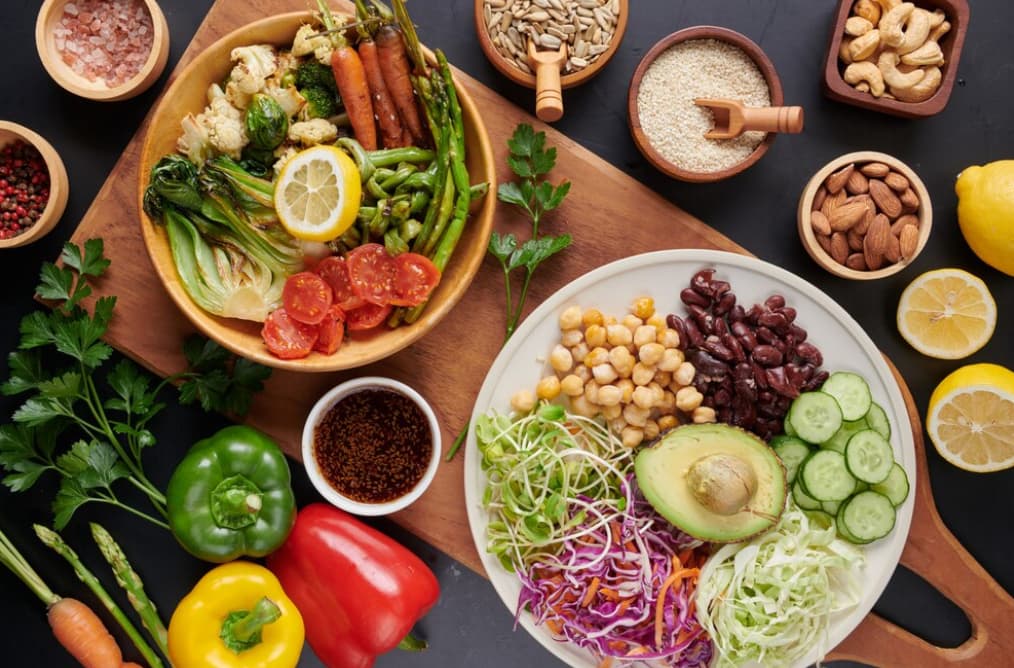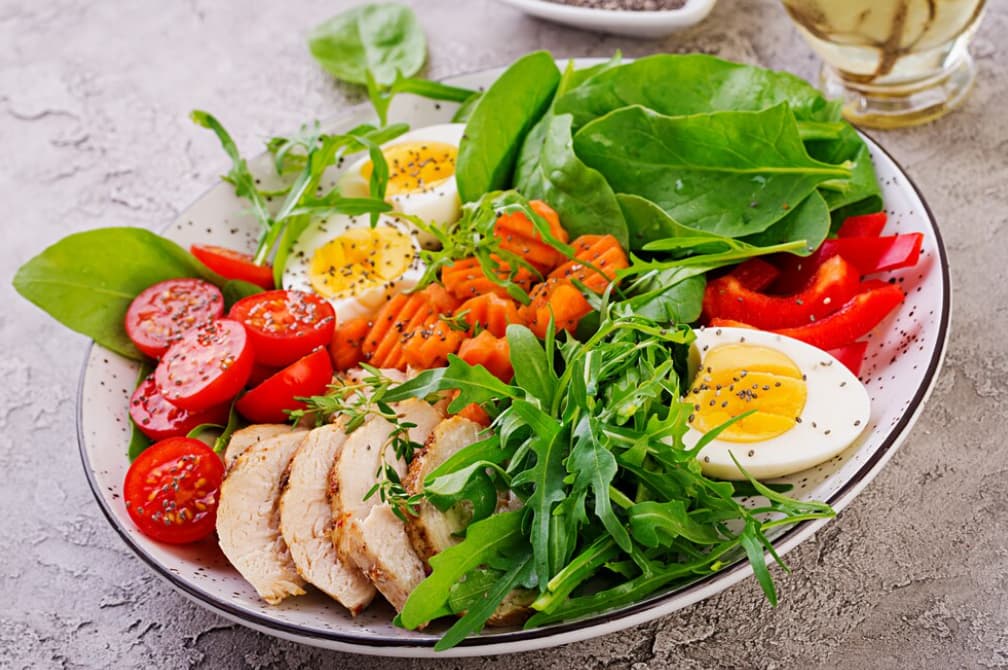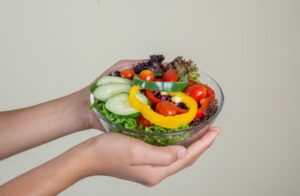
Dietary Do’s and Don’ts for Laparoscopic Surgery
Navigating nutrition is vital for anyone preparing for or recovering from laparoscopic surgery. This surgical approach, known for its minimal invasiveness, addresses various medical issues, ranging from appendicitis to gallbladder removal.
Adhering to a tailored diet plan is key in mitigating potential surgical risks, facilitating healing, and easing postoperative discomfort. Our guide will delve into the optimal dietary choices to embrace and those to steer clear of during the laparoscopic surgery period. Whether it’s for you or someone you care for, understanding what to consume post-surgery can significantly enhance the convalescence experience.
Come join us as we delve into the essential dietary guidelines crucial for optimal recovery from laparoscopic surgery.
Dietary Guidelines for Post-Laparoscopy Recovery

Laparoscopic surgery, known for its minimal invasiveness and shorter recovery time, allows patients to return home on the same day as the procedure. Despite the swift recovery, it’s crucial for patients to pay attention to their diet to aid the healing process and manage post-operative discomfort effectively. Here are dietary recommendations to follow after laparoscopic surgery:
Optimal Dietary Choices for Post-Surgery Recovery
Following surgery, adopting a liquid-based diet is often advised initially. However, with medical approval, a gradual transition to solid foods can be considered. Liquid diets typically consist of clear liquids such as soups, broths, milk, yogurt, and pudding.
Furthermore, you can incorporate strained creamy soups, cream of rice, custard, and sherbet into your regimen. It’s crucial to steer clear of foods containing seeds or nuts and opt for lactose-free alternatives if you’re lactose intolerant.
Embrace Soft Food Varieties
Moving on from liquid diets, the subsequent phase typically involves transitioning to soft foods. These selections possess a softer texture and can be pureed if needed. Ideal choices for this phase include finely ground or gently cooked meat, fish, and poultry, along with soft cheeses featuring mild flavors, boiled potatoes, smooth peanut butter, and cooked or canned fruits and vegetables devoid of citrus.
To minimize stomach discomfort, it’s advisable to avoid citrus fruits and gas-inducing foods like broccoli, cabbage, cauliflower, and Brussels sprouts. This dietary approach ensures a smoother recovery process while providing necessary nutrients for healing. Always consult with your healthcare provider for personalized dietary recommendations tailored to your specific needs and recovery progress.
Incorporate Standard Dietary Choices
As your digestive system regains its normal function, transitioning back to a regular diet becomes feasible. However, it’s important to exercise caution and avoid consuming spicy and oily foods, as they can exacerbate indigestion.
To ease the adjustment to a regular diet, opt for smaller bites and chew thoroughly to aid digestion. Additionally, certain medications used to alleviate abdominal discomfort may lead to constipation. Combat this issue by ensuring adequate hydration, as water helps promote smoother bowel movements.
By gradually reintroducing a balanced diet and paying attention to portion sizes and hydration, you can navigate the transition smoothly, minimizing discomfort and optimizing your digestive health.
High-Fibre Foods for a Healthier Diet
Incorporating a variety of fibre-rich foods into your diet plays a pivotal role in supporting the recovery process after laparoscopic surgery. A diet abundant in dietary fibre not only facilitates healing but also plays a crucial role in preventing post-operative complications such as constipation. This condition can exacerbate discomfort and potentially lead to hospital readmission, making it a significant concern in the post-surgery recovery phase.
To combat this, it is advisable to include fibre supplements, such as psyllium husks, and to prioritize the intake of foods naturally high in fibre. Natural fibre sources are notably more beneficial for recovery and overall health. Essential high-fibre foods to integrate into your diet include:
- Whole Grain Bread: Opt for loaves rich in color, indicating the use of whole grains, as opposed to the less beneficial white bread. Whole grains like corn, oatmeal, and others are excellent sources of fibre;
- Fruits: A vital source of both fibre and essential vitamins, fresh fruits should be a staple in your recovery diet;
- Vegetables: Fresh vegetables offer a significant amount of fibre and are crucial for a balanced, healing diet;
- Cereal: Be selective with cereals, as not all are created equal in fibre content. Look for products specifically labeled as high in fibre or choose traditional options such as oatmeal or cream of wheat for a nutritious start to your day.
Common Mistakes Post Laparoscopic Surgery
Foods That Can Lead to Constipation
Constipation often arises as a common concern post-surgery, particularly following gastrointestinal procedures. Additionally, the use of pain medications can exacerbate this issue by slowing bowel movements. To address discomfort and alleviate pressure around incision sites, medical professionals may recommend the use of laxatives in certain cases.
For individuals undergoing laparoscopic liver transplant surgery, it’s advisable to avoid consuming foods that are known to potentially cause constipation. These include:
- Red meat varieties such as pork, lamb, beef, mutton, and veal;
- Dairy products and cheese, which can sometimes contribute to bowel irregularities;
- Processed grains that lack sufficient fiber content;
- Gluten-rich foods, as gluten sensitivity may exacerbate digestive issues.
By being mindful of dietary choices and opting for foods that support digestive health, individuals can better manage post-surgical constipation and promote smoother recovery processes.
High-Fat or Deep-Fried Food Choices
Opting out of fried or fatty foods is essential following laparoscopic surgery. These foods often contain high levels of trans fats, increasing the likelihood of developing heart disease, obesity, and diabetes. Consumption of fried foods after surgery can also raise blood pressure and cholesterol levels.
Moreover, indulging in fried foods may induce nausea and vomiting, placing strain on stitches and hindering the healing process. It’s advisable to abstain from consuming fried foods during the recovery period after surgery.
Processed Food Options
In general, processed foods tend to lack essential vitamins, minerals, and nutrients while often packing excessive preservatives, sodium, fats, and sugars. Opting for healthier alternatives can significantly improve your diet. Consider avoiding processed options like frozen meats, snacks, cookies, sugary beverages, chips, and breakfast cereals. Instead, explore whole food alternatives rich in natural nutrients to support your overall well-being.

Dairy Products Containing Full-fat
For individuals recovering from surgeries related to the gastrointestinal system, intestines, or other general procedures, consuming dairy products with high fat content could lead to complications like constipation. Furthermore, some dairy items, including cheese, have been known to induce feelings of nausea. To mitigate these potential side effects, it is advisable to choose dairy options lower in fat, such as skim milk, low-fat cottage cheese, and yoghurt, which may be better tolerated during the recovery period.
Alcohol
Post-laparoscopic liver transplant, it’s crucial to steer clear of alcohol consumption, especially when using pain medications. Alcohol can interfere with medication efficacy and impede blood clotting, potentially leading to complications in case of bleeding. Therefore, it’s advisable to abstain from alcohol intake following surgery.
In essence, a well-rounded diet rich in nutrients is vital for successful recuperation after laparoscopic surgery. Patients should prioritize high-fiber foods and opt for low-fat dairy products while steering clear of constipation-triggering items such as red meat and processed grains.
During the recovery phase of a laparoscopic liver transplant, dietary mindfulness is paramount to avoid straining incisions. Adhering to a laparoscopic surgery diet and making prudent food choices can bolster the body’s healing mechanisms and expedite the recovery journey.
FAQs
After laparoscopic surgery, it’s important to adopt a nutrient-rich diet that supports healing and minimizes the risk of complications. Opt for foods high in fiber such as fruits, vegetables, and whole grains, along with lean proteins like chicken or fish, and low-fat dairy products. Stay hydrated by drinking plenty of water and avoid constipation-inducing foods like red meat and processed grains.
Yes, patients can include rice in their diet after a laparoscopic liver transplant. However, it’s recommended to choose whole-grain options like brown rice or quinoa, which offer fiber and essential nutrients. Keep preparations low in fat and salt, and consume rice in moderation.
Yes, chicken is a suitable choice after laparoscopic surgery as it provides lean protein, aiding in the healing process. Ensure chicken is thoroughly cooked to avoid any risk of bacterial infection. Opt for skinless chicken breasts, which are lower in fat compared to other cuts.
Yes, it’s advisable to steer clear of spicy foods following a laparoscopic liver transplant. Spicy foods can irritate the digestive system, potentially leading to discomfort, heartburn, and acid reflux, which can impede the healing process.
While laparoscopy can be performed during menstruation, it’s generally not recommended. Menstrual bleeding may obscure visibility of abdominal organs, increasing the risk of complications. Additionally, patients may experience heightened pain and discomfort due to menstrual cramps. Whenever possible, scheduling the procedure outside of menstruation is preferable.
It’s generally advised to wait 1-2 weeks before resuming solid physical activity post-laparoscopy. The exact timing depends on the surgery type and individual recovery. Start with low-impact activities such as walking or gentle stretching, gradually increasing intensity and duration as tolerated. Always consult with your healthcare provider before starting any exercise regimen post-surgery.
Conclusion
A balanced, nutrient-rich diet is key to a successful recovery post-laparoscopy. Include high-fiber foods and low-fat dairy products in your meals and avoid constipation-causing foods like red meat and processed grains. By making conscious food choices post a laparoscopic surgery, you support your body’s healing process, assuring a quick recovery.

